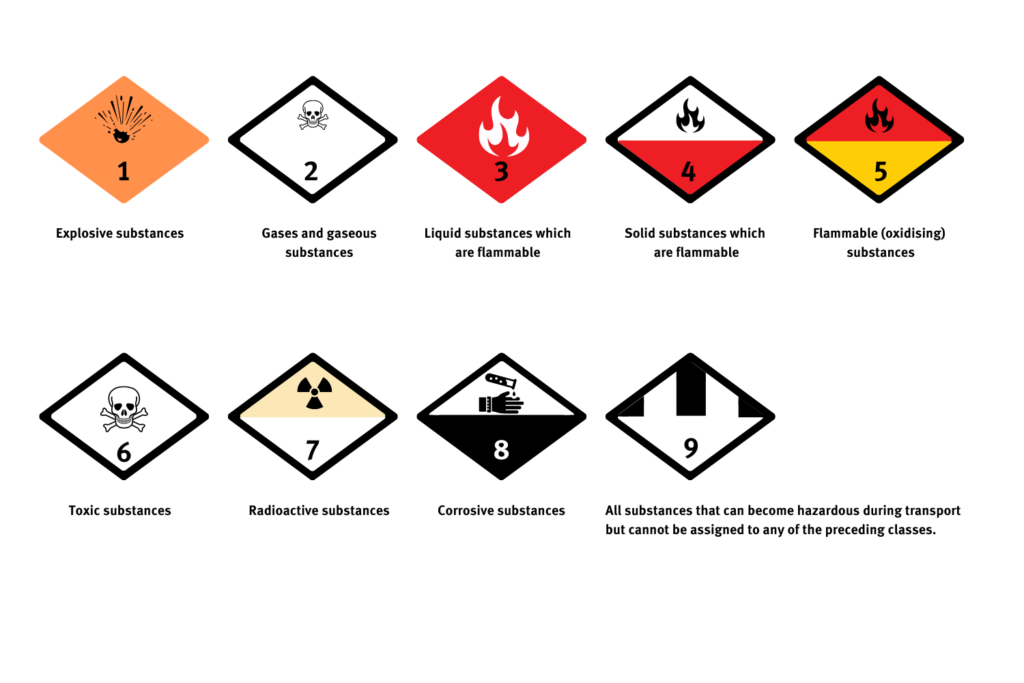ADR
ADR – Definition
What is ADR?
The ADR is a European agreement regarding the international transportation of dangerous goods on the road and thus a common term in the transport sector. As a basic set of rules, it contains all regulations for road transport regarding packaging, classification, cargo securing and labelling of dangerous goods. Furthermore, it contains regulations regarding the handling of dangerous goods during transportation and limits regarding the means of transports in use.
What does the abbreviation ADR mean?
The abbreviation ADR stands for „Agreement concerning the International Carriage of Dangerous Goods by Road“; until 2020, it stood for „Accord européen relatif au transport international des marchandises Dangereuses par Route“. The official name has been changed so that non-European countries can also enter the agreement.
How did the agreement come about?
The agreement was made in Geneva in 1957 and entered into force in 1968. Today, it applies in all EU countries and is legally valid via EU regulation. In the meantime, countries outside the EU such as Russia, Morocco and Nigeria have also joined the agreement. As of 09/2022, 53 countries are part of the ADR.
What does the ADR regulate? What are its functions?
The ADR regulates the classification of dangerous goods, the use and labelling of packaging of dangerous goods and rules for the documentation of a dangerous goods transport. Additionally, it contains construction and test regulations for containers, tanks and, in part, vehicles for dangerous goods transports. Exemptions to the ADR rules such as the small quantity rule are also part of it. Another central topic are the security rules and the rules regarding behaviour in case of damages. The ADR is adjusted to match the current level of technical and legal knowledge every two years.
What duties arise from it?
- Everyone who is part of the transport process needs to be instructed correspondingly. According to the German regulation for risk prevention officers for dangerous goods (GbV), every company that is involved in the transport of dangerous goods needs at least one risk prevention officer and a valid training certificate.
- Transport vehicles and packaging need to be marked with danger labels and danger boards (orange warning sign).
- Every member of the vehicle crew needs to carry personal safety equipment such as protective gloves, a high-visibility vest and eye protection.
- The vehicle equipment needs to include, among other things, two warning signs, a shovel, a manhole cover, a collection container and an ABC powder fire extinguisher.
- The ADR divides vehicles into different vehicle classes based on the transported goods. Every vehicle needs an ADR registration certificate that needs to be renewed each year with a technical inspection. Some vehicles, such as vehicles with free-flowing bulk materials or explosive general cargo, require a separate ADR registration.

See also:
Free-Flowing Bulk Material (FFBM) Free-flowing bulk material is a term used in freight transport and refers to goods without a fixed geometrically defined shape< [...] Dangerous Goods The term dangerous goods refers to materials and goods that can pose a threat during the transport process. These dangerous goods are d [...]